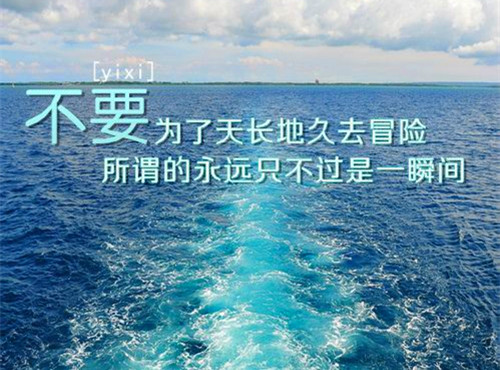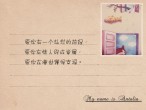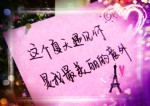
颐和园的英语作文200字【一】
今天,学校组织我们四年级的学生参观颐和园。
在老师的带领下,我们乘车来到了颐和园。一下车,便见入口处人山人海。我们随着人流从东宫门进去,一路来到长满各种各样古树的万寿山,四处风景优美,我们在石坊旁边照了相,担任辅导员的家长还为我们照了合影。大家又一路兴高采烈地来到了长廊,长廊两边的柱子上绘着多彩的画卷,给我留下了深刻的印象。穿过长廊,远远看见一座桥,“一孔、二孔、三孔……”,啊!十七孔桥,真雄伟!就像我们课文中的赵州桥一样雄伟、坚固,只是孔数比赵州桥的多,我国古代的工匠真了不起!走在桥上,左右两边共有500多只形态各异的狮子,它又让我想起了卢沟桥上的狮子,在我看来,有异曲同工之妙。我很喜欢。
颐和园是我国现存保护最完整的四大园林之一,是我国宝贵的历史遗产。我们游玩得十分兴奋,还有很多地方没有去到,可是返校的时间到了。我们恋恋不舍地上了车,真希望下次再来游园。
颐和园的英语作文200字【二】
星期六,我和爸爸商量了一下去不去颐和园,我一听到“明天去游颐和园”这句话,我高兴得手舞足蹈。
星期天,我一大早就起来了。我一看,七点了,还有四十分钟火车就要开走了,我急急忙忙的催促爸爸起来过了一会儿,我和爸爸出门了。坐上一辆公交车向火车站驶去。到了火车站我和爸爸坐上了火车到了颐和园。
我和爸爸进了颐和园的大门,绕过大殿就来到有名的长廊,这条长廊一眼望不到头,这条长廊有七百多米长,不知有多少间,我和爸爸去问服务员,才知道一共有二百七十三间,每一间的窗子上都画着画,画着人物·花草,风景,没有那两幅是相同的。长廊两旁栽满了花木,看着非常舒服。
走完长廊,就来到万寿山脚下,我仰望山上,看见了一座三角宝塔形的三层建筑,是佛香阁,下面一排排金碧辉煌的宫殿,是排云殿。
过了一会儿,我和爸爸登上了万寿山,站在佛香阁的前面向下望,我看见了昆明湖,游船,画舫在湖面慢慢地划过,几乎不留一点痕迹。
游了颐和园之后,我很快乐,快乐的是:去了我国的大好河山玩,这大好河山就是颐和园。
颐和园的英语作文200字【三】
北京的颐和园是一个漂亮的大花园,听说很有名,我就和我的朋友们一起来到了这儿。
走进了颐和园,绕过了各个大殿,就走到了很有名气的长廊,绿绿的柱子,红红的栏杆。站在中间,一眼望不到头,导游说,这条长廊有七百多米长,走得再快的人也得要好久才能走到尽头呢!长廊旁边绿树成荫,好像到处都是上百岁的树木。人也来来往往,都在那儿散步、游玩,可开心了!
走着走着,一转眼就走完了长廊,就到了万寿山脚下,我们在那儿留了影,走了大上午,肚子也饿了,于是我们去了一个比较偏僻的小巷子里吃了中午饭,又继续开始走,去爬万寿山,抬头一望,一个三角状的房子呈现在了我的眼前,前面是山,后面是佛阁,看了真是好奇怪,下来时,是从佛香阁下来的,下来的路,像一个迷宫,差点儿就出不去了!它的地形不仅像迷宫,而且,它的墙壁是用金灿灿的琉璃瓦造成的,在灿烂的阳光下,把眼睛照得眼花缭乱。
颐和园,是一个漂亮的大公园,里面有好多东西呢,你也一起去看一看吧!
颐和园的英语作文200字【四】
北京颐和园是清朝时期的皇家园林。风景秀丽的它,向世人展示中国皇家园林的美。
我们刚进颐和园,一座极有园林特色的,由白玉汉石砌成的拱桥就出现在眼前:石拱桥护栏雕着许许多多的龙,栏柱上雕刻着一只只威武的,形态不同的小石狮子。经过石拱桥,便看见了昆明湖湖泊。
昆明湖湖泊是颐和园一个大湖,从高处向昆明湖湖泊望去,昆明湖湖泊就像一个寿桃。昆明湖湖泊,是一个人工湖,我想,那该要用多少人力物力呀!昆明湖湖泊周围绿树成荫,景色宜人,湖水清澈,真令人心旷神怡。在昆明湖湖泊的北岸是一条雕梁画柱的长廊,这长廊长达700多米,有1万2千幅画,并且每幅画都没有相同的地方。
走到长廊尽头,就看见一座倚山而建的阁楼——香阁。香阁是慈禧太后游玩颐和园,在颐和园休息的地方。那里红漆梁柱,金漆木雕,金壁辉煌,里面还有不少奇珍异宝。
最后我们来到了颐和园的一个景点:苏州街。它是将江南民居生活浓缩到园内,苏州街环形而建,街的一边是古色古香的商铺,地是用花岗岩石建成的,另一边是水道,中间有小拱桥,好像回到古时。
颐和园有山有水,有亭台楼阁,真不愧为皇家园林。
颐和园的英语作文200字【五】
今天,我们去游览了颐和园,颐和园是皇家最大的花园,里面有囚禁清朝皇帝光绪的地方。
在囚禁光绪的四合院里,只有一间房是供光绪住的,其他房子看的是阁楼,雕梁画栋的,但中看不中用。你一开门,里面没有桌子 、椅子 、床等摆设,只有一堵墙。 为什么?因为光绪帝的母亲慈禧太后怕他造反,才在屋里砌起了墙,使光绪只能在一间屋子里呆着。
走过这个四合院,便是世界上最长的画廊——长廊。它的总长是七百多米,共有一万四千多幅形态各异的画,有山水 、花鸟鱼虫,还有人物,应有尽有。它是在上世纪六十年代遭到破坏后,在周总理的关注下重新修复的。
随后,我们游览了万寿山 、参观了佛香阁。
时间过的真快!转眼间太阳快下山了。我们就要离开颐和圆了,但颐和园的美景尚为全进入我们的眼帘,真有些遗憾。
再见了颐和园,我会再来的。
颐和园的英语作文200字【六】
??颐和园英语作文范文The Summer Palace can be divided into two parts: Longevity Hill and Kunming Lake. The whole garden covers an area of 290 hectares, of which three- fourths consists of a lake and rivers. This imperial garden features 3,000 room-units and covers an expanse of 70,000 square meters with more than 100 picturesque spots of interest. The layout of the Summer Palace includes three groups of architectures: palaces where the emperor attended to state affairs, resting palaces of the emperor and empress, and sightseeing areas. Entering the East Gate we will come the office quarters. Entering the East gate we will come to the office quarters. The annex halls on both sides were used for officials on duty.
This is the Gate of Benevolence and Longevity. Above the door there is a plaque bearing the same name in both Chinese and Manchurian characters. The gigantic rock in the foreground is known as Taihu rock, or eroded limestone, quarried in Jiangsu Province and placed here to decorated the garden.
On the marble terrace sits a bronze mythical beast, known as Qilin or Xuanni. It was said to the one of the nine sons of Dragon King. A point of peculiar interest is that it has the head of a dragon, antlers of a deer, the tail of a lion and hooves of an ox, and is covered with a unique skin. IT was considered an auspicious creature that brought peace and prosperity.
This grand hall is the Hall of Benevolence and Longevity. It was built in 1750, and was known as the Hall of Industrious Government. Emperor Qianlong ruled that the halls where monarchs attended to state affairs would be named after them. After the rebuilding of the Summer Palace, the hall was renamed, suggesting that benevolent rulers would enjoy long lives.
The arrangement of the hall has been left untouched. In the middle of the hall stands a throne made of sandalwood and carved with beautiful designs. In the background there is a screen carved with nine frolicking dragons. On either side of the throne there are two big fans made of peacock feathers, two column-shaped incense burners, crane-shaped lanterns and an incense burner assuming the form of Luduan, a mythological animal which was suppose to have the power to prevent fire. The small chambers on eight side were where the Emperor Qianlong and Empress Dowager Cixi rested and met officials on formal occasions.
On the verandah in the foreground of the hall there are bronze statues of dragon and phoenixes which served as incense burners on major occasions. They are hollow and smoke comes through holes on their backs. Also on the veranda are Tai Ping (Peace bronze water vats made during the reign of Emperor Qianlong. As a precaution in case of fire, a fire was lit underneath the vats in the winter to keep the water in them from freezing.
(At the entrance of Garden of Virtuous Harmony
Outside the East Gate–in front of the Hall of benevolence and Longevity- in front of Garden of Virtuous Harmony-in front of the Grand Theater Building- a lakeside walk from the Garden of Virtuous Harmony to the Hall o Jade Ripples- in front of the o Jade Ripples- in front of the Yiyunguan (Chamber of Mortal Being-Hall of happiness and longevity- in front of the Yaoyue (Chamber of Mortal Beings-Hall of Happiness and Longevity-in front of the Yaoyue (Inviting the Moon Gate of the Long Corridor- strolling along the Long Corridor- visiting an exhibition of cultural relics- in front of the Hall of Dispelling Clouds- inside the Hall of Dispelling Clouds- atop the Tower of Buddhist Incense- on a hilltop leading from the back door of the Tower of Buddhist Incense- on a hilltop leading from the back door of the Tower of Buddhist Incense- inside the Garden of Harmonious Interest –outside the south gate to Suzhou Shopping Street- atop the stone bridge inside the Suzhou shopping street –on the road from the south gate of suzhou shopping street- on the road form the south gate of suzhou shopping street to the marble boat- in front of the ruins of the Garden of complete spring –along the lakeside by the marble boat-boating on the Kunming Lake-leaving out through the East Gate.
(Outside the east gate
Ladies and Gentlemen:
Welcome to the Summer Palace. (After the self-introduction of the guide -interpreter I hope this will be an interesting and enjoyable day for you.
During our tour, you will be introduced to time honored historical and cultural traditions, as well as picturesque views and landscapes.
The construction of the Summer Palace first started in 1750. At that time, the Qing Dynasty was in its heyday and China was a powerful Asian country with vast territories. The monarch in power then was Emperor Qianlong. With supreme power and large sums of money, he summoned skillful and ingenious artisans from all over the country to carry out this construction work in honor of his mother's birthday. After 15 years and one seventh of the nation's annual revenue spent, the Garden of Clear Ripples was completed and served as a testimony to China's scientific and technological achievements. In 1860, this vast royal garden was burnt down along with the Yuanming Yuan (Garden of Perfection and Brightness by Angol-French allied forces. In 1888, Empress Dowager Cixi reconstructed the garden on the same site and renamed it the Garden of Nurtured Harmony (Summer Palace. Characterized by its vast scope and rich cultural embodiments, the Summer Palace has become one of the most famous tourist sites in the world.
This is the main entrance to the Summer Palace-the East Gate On top of the eaves of the door there is a plaque bearing a Chinese inscription which means "Garden of Nurtured Harmony", whose calligrapher was Emperor Guangxu. The gate that you are now entering was used exclusively by the emperor, the empress and the queen mother. All others used the side doors.
















